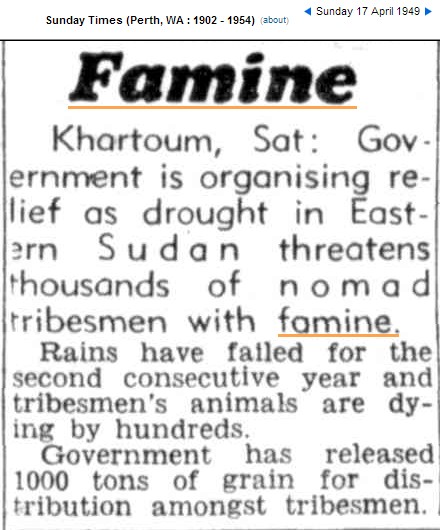Hansen, director of NASA’s Goddard Institute for Space Studies, and Lisa Goddard, director of the International Research Institute for Climate and Society, offered a climate science perspective during the conference, which focused on global sustainable development.
Goddard focused on drought, and the need to anticipate climate extremes and manage their effects.
She focused on a severe drought in southern Sudan, which, after two failed rainy seasons, has brought famine. It’s difficult to attribute this drought directly to global climate change, since there has been no long-term trend in the precipitation in the region.
Climate Solution: Pay True Cost of Fossil Fuels, NASA Scientist Says – Yahoo! News
There is no evidence that anything has changed, but we need to blame stuff on climate change to keep our funding alive. Here is the identical story from 1949.
h/t to Marc Morano



Mrs Goddard? 😉
SHE WANTS MORE MONEY:
Goddard faulted President Barack Obama’s administration for not supplying adequate funding for climate research…
NOT ONLY CLIMATE CHANGE, BUT CLIMATE VARIABILITY TOO !!
“Meanwhile, the U.S. has been experiencing not only climate change but climate variability of quite a severe nature,” Goddard said, referring to the recent unusual weather, including unprecedented warmth across the lower 48 states.
So Carbon causes the following separate and distinct events which require more funding for study:
Climate Change
Climate Variability
Climate Variability of quite a severe nature
Unusual Weather
Unprecedented Warmth
These “scientists” have lost their marbles.
There is no evidence that weather has become more variable, unusual and severe. In North Dakota there was a 182 degree temperature range during 1936, from -61 to +121. Nothing close to that during recent years. Also nothing in recent years to compare with the 1925 tornado and 1935 hurricane, for storms hitting the US.
As some of the “Coming Ice Age” books of the 1970s pointed out, drought in the Sahel is associated with cooling trends from the north that curtail the Summer Monsoon, the primary source of moisture. What we are seeing now is a recurrence of that cycle. These cycles are predictable, with predictable effects. The best defense is to build up a physical and political infrastructure that can ameliorate the bad effects and tide over the population until the rains come back.